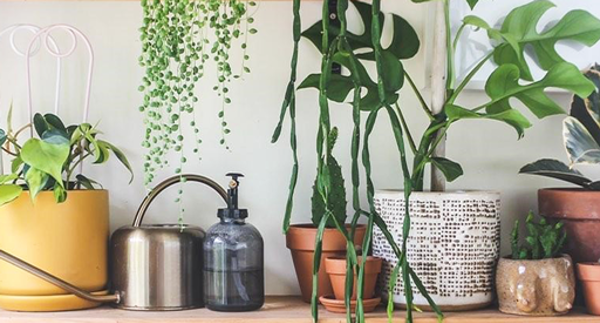
Freshen up your living spaces with some beautiful greenery this season! Indoor plants are a decorative addition indoors, breathing colour, life, texture and scent into your home.
We've picked our 10 must-have indoor plants to enhance your living spaces.
1. Ficus
Ficus is one of the most popular ornamental house plants. It keeps a tree like shape and enjoys bright indirect or unfiltered light. Ficus can handle relatively high humidity and misting so are a good choice for kitchens which generate heat.
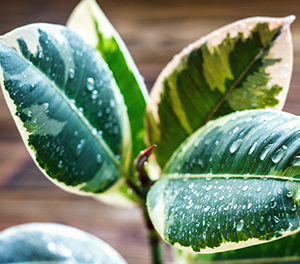
2. Maidenhair Fern
Ferns are another great indoor addition to dress up your indoor space and the Maidenhair fern is a classic indoor plant. It is a versatile foliage plant and is available in a variety of textures and sizes to suit the style of your room and add interest. Maidenhair ferns are lovely fillers for pot plants. They like a brightly lit position indoors and plenty of water.
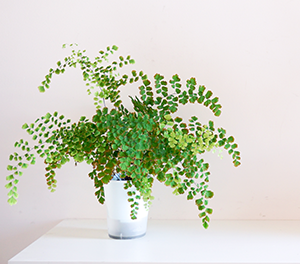
3. Peace Lily
Peace lilies make an excellent choice for both the home or office, and along with their dark green foliage and beautiful white flowers, they are great for cleaning the air of the room they’re in. Peace lilies are tropical plants so they prefer a warm, humid environment and bright but indirect light. Make sure to keep their soil moist, but avoid over watering peace lilies.
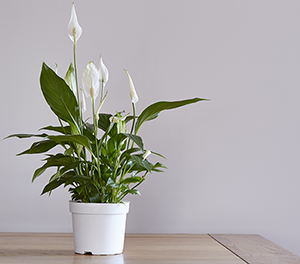
4. Snake Plant
Snake plant, also known as ‘Mother in Law's Tongue’ is a tolerant plant that features stiff upright leaves. It’s a perfect indoor plant for beginners as it can handle being neglected for weeks at a time. Snake plants prefer indirect sunlight and less frequent watering, in fact it’s best to allow these plants to dry out in between watering.
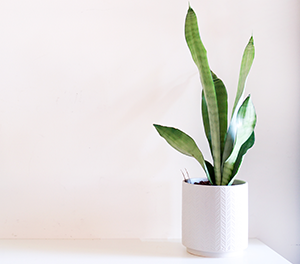
5. Chain of Hearts
The ever-popular Chain of Hearts gets its name from the heart shaped leaves that grow a few centimetres apart from each other along trailing, wispy stems. They’re best displayed in a hanging basket or on a high shelf to show off the beautiful long vines. Chain of Hearts prefer bright, but indirect sunlight and should be watered sparingly. Chain of Hearts go dormant in the winter, so even less watering is required during the cooler months.
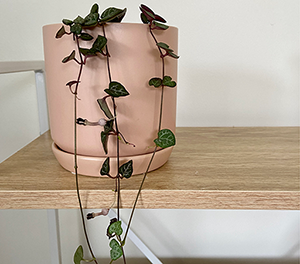
6. Monstera Deliciosa
The Monstera, commonly known as the ‘Swiss cheese plant’ because of its perforated leaves, is an all-time favourite indoor houseplant. Monstera need a lot of space, so place them in a spot where they will have room to grow. Being a tropical plant, they also prefer humid conditions and a brightly lit position. Make sure you don’t put Monstera in direct sunlight as this can burn the leaves. Water moderately and allow the soil to dry out in between watering. Monstera's large, glossy leaves can be prone to gathering dust so wipe them gently with a cloth to keep them looking their best.
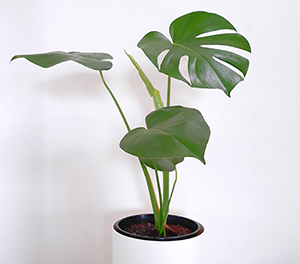
7. String of Pearls
Another trailing houseplant growing in popularity is String of Pearls. A striking succulent that features long beaded tendrils that can grow up to a metre long, making them perfect as a hanging plant. Their unique foliage stores water, which makes them more tolerant of drought. Allow String of Pearls to dry out between watering, as root rot is a common problem if this plant is overwatered. String of Pearls will tolerate a bright light, so a sunny windowsill or shelf is a great spot.
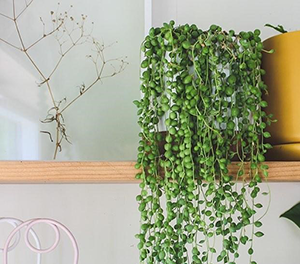
8. Philodendron Birkin
Philodendron Birkin is becoming increasingly popular when it comes to trendy houseplant options, and you can see why with its stunning foliage featuring striking pin stripes. The Birkin enjoys bright but indirect sunlight, a humid environment and moist soil. Regularly water, allowing the soil to only partly dry out between watering.
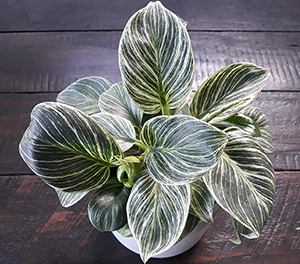
9. Callisia Bubbles
Callisia Bubbles (Callsia repens) is another trailing houseplant, with interesting shaped foliage that cascades over the edge of the pot. The bubbles plant prefers a bright position, but not direct sunlight. Water regularly keeping the soil moist and trim to maintain shape and encourage new growth. Look out for the 'Pink Bubbles' variety for something extra special.
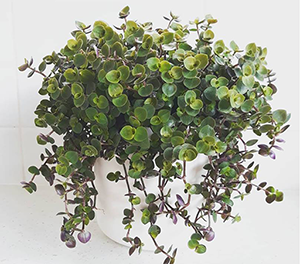
10. Aloe Vera
The Aloe Vera plant is known for its healing properties when grown outdoors, but it can also be grown indoors with its interesting shape and ability to help purify the air. Aloe Vera is a type of succulent, making it a low maintenance plant that will tolerate a little bit of neglect. Place Aloe Vera in a sunny spot and make sure the top of the soil is completely dry before watering.
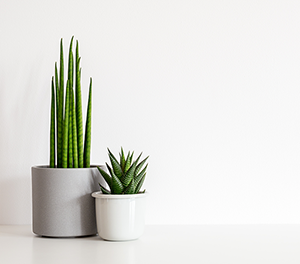
Tips for your indoor plants
- Ensure your pot or container has drainage holes and a decent depth to hold enough potting mix to house the roots. Lack of root room will limit the capacity for a plant to fully develop.
- Fill pots and containers with Tui Indoor Plant Mix, formulated specifically for indoor plants.
- Plants use nutrients from the soil as they grow, so regularly replenishing the nutrients ensures your plants remain healthy. Feed your plants with Tui Enrich Pour & Feed Indoor Plant Fertiliser according to your plants specific feeding requirements.
- Add Debco SaturAid to pots and containers to aid water distribution and retention.
- Water your indoor plants regularly so they don't dry out.
- Dust particles can cling to plant leaves and block the leaf pores. Every now and again spray a fine mist of tepid water over the leaves to unclog the pores and gently wipe with a soft cloth.
Post a comment
Top 10 Indoor Plants Comments
WONDERFUL! INDOOR PLANTS ALSO HELP WITH MOOD and CALM Fractious toddlers by cleansing the atmosphere as well as brightening up your living spaces- especially the humid bathroom!
julie mamae ReiLawson
great site, well done!
Len Frost
I love my 2 Peace Lilies although I don’t manage to have flowers all the time. There is such a variety so must get some more. Thanks for the advice on indoor plants.
Mary Johnston
Hi Tui, it seems all these need bright spots. Many of us have places and rooms with less light, especially as more people are moving into apartments and terraced houses where there are not so many opportunities for windows. It would be great to get some ideas of plants that can tolerate lower light levels.
Abby
Hi Abby, some of the indoor plants listed will grow in low light levels, but even those that do thrive in lower light will only do so for short periods of time and it is good practise to bring them out into more light over the winter. When the days get longer they can go back to a position with less light. A good guide for light levels for plants is that there should be enough light to be able to read the newspaper. Plants can adapt to low light levels, watering needs to be tailored to the environment they are in as there is a risk of over-watering in low light situations. Like us, they don't like to be constantly kept in the dark. Most indoor plants do well with bright light but not direct sunlight.
Plants that tolerate low light levels are ferns (maidenhair, boston, asplenium), peace lily, Sanseveria (Mother-in-Laws tongue), Devils Ivy (Pothos) the variagated plants will fade in low light, Dracaena marginata, aspidistra (cast iron plant), common ivy, and some philodendrons, check plant labels for specific growing requirements. Tui Team
Tui Team
I have finally found a good spot for the maiden hair fern but still struggle with the peace lilies. The other plant that is doing well is zygocactus in well lit areas. Thankyou for all the updates.
Heather
I have a lovely collection of indoor plants which are very beautiful and healthy looking but I cannot get any flowers on my peace lilies, African violets or my Clerodendrum. Any tips? Marilyn
Marilyn Hamlyn
Hi Marilyn, as your plants are healthy and growing well, they must be in the right place, it is very important to have the right plant in the right place, try moving them around to see if there is a better position that may bring on flowering. For most indoor houseplants to thrive the best situation is bright light but not direct sunlight. Do you regularly feed your indoor plants with a specialty indoor plant food? One that is high in potassium (K) will help stimulate flowering. Liquid feed your plants every 2 weeks in spring, summer and autumn (September through to March/April), stop feeding over the winter months as plants need a rest from feeding and reduce watering during winter. Make sure plants are consistently watered in the warmer months and don’t allow them to dry out completely, make sure the potting mix is kept moist but not constantly wet. Indoor houseplants enjoy humid conditions, to raise humidity mist the leaves regularly (except the African Violet), place pebbles in the saucer and the pot on top of the pebbles to keep the plant out of the water, keeping moisture in the bottom of the saucer raises the humidity around the plant. Some plants are manipulated by growers to flower as they are sensitive to daylength, for example poinsettia, it is a short day length flowering plant so growers black out the glasshouse and manipulate the light to get the plant to flower in time for Christmas which is a long day length period and not their typical flowering period. Some plants such as Peace lily and anthurium prefer to be root bound in their pot before they flower, regular repotting may prevent flowering for some plants.
Lianne
Very informative!
Wybe de Jong